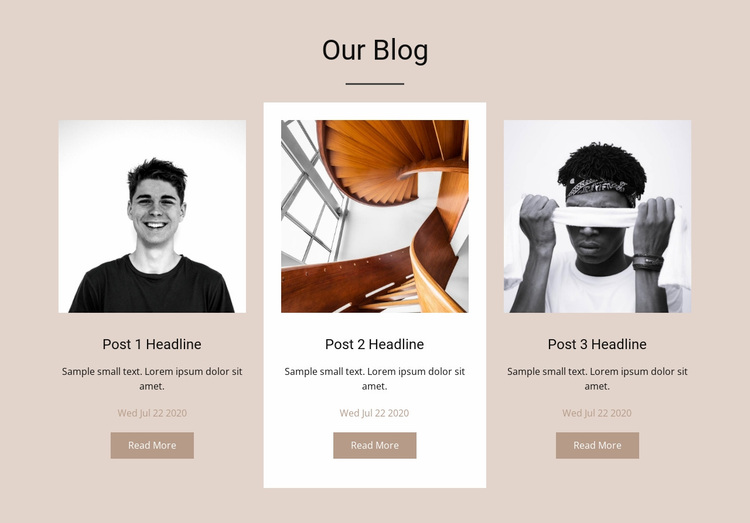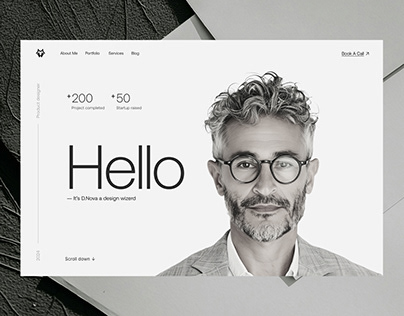Top Tips for Producing an Impactful Internet Site Style That Converts
In today's electronic landscape, the importance of an impactful website layout can not be overstated, especially when it concerns converting site visitors right into clients. To achieve this, one must consider a selection of elements, including understanding the target market, focusing on individual experience, and optimizing for mobile platforms. In addition, the tactical use of engaging call-to-actions and a well-defined aesthetic hierarchy plays an important role in leading individuals via their journey. As we check out these crucial components, it comes to be noticeable that the success of your site depends upon greater than just aesthetics; it needs a thoughtful strategy to layout and capability.

Understand Your Target Market
Understanding your target market is essential to reliable website design, as it lays the foundation for producing an engaging user experience. Determining that your individuals are, including their demographics, preferences, and habits, makes it possible for developers to tailor the internet site's web content, design, and functionality to meet certain requirements.
Carrying out extensive market research is essential in this process. Surveys, meetings, and analytics can supply important insights right into user expectations and pain factors. By assembling this data, designers can produce individual identities that represent various sections of the audience, guaranteeing that style choices are notified and pertinent.
In addition, understanding the target audience helps in picking suitable design elements such as color design, typography, and images that reverberate with customers. A web site that talks directly to its audience fosters a feeling of connection and trust, encouraging longer check outs and greater conversion rates.
Inevitably, a user-centered strategy to web site design not only boosts individual fulfillment but also sustains business goals by driving involvement and commitment. By prioritizing the demands and choices of the target market, a site can efficiently serve its function and attain preferred outcomes.
Prioritize Individual Experience
To enhance the general performance of a website, focusing on individual experience (UX) is necessary (Website Design). A well-designed UX makes certain that visitors can navigate the site effortlessly, discover info swiftly, and involve with content meaningfully. This leads to increased individual satisfaction and greater conversion rates
Begin by carrying out user-friendly navigation. Menus should be logically structured, enabling users to locate vital areas of the website with marginal effort. Uniformity in layout aspects, such as color design and font styles, cultivates experience, which is vital for preserving customer engagement.
In addition, consider the packing rate of your web site. A delay of just a couple of secs can lead to substantial drop-offs, as users are much less likely to await a slow-loading web page. Simplifying photos and optimizing code can enhance efficiency and keep visitors.
Moreover, clarity in material presentation is essential. Use succinct, engaging language and break up text with visuals to enhance readability. By prioritizing customer experience, you not only create an extra satisfying setting for site visitors however also reinforce your brand's credibility. Eventually, a concentrate on UX is a financial investment in the lasting success of your website.
Maximize for Mobile Tools
Maximizing for smart phones is important in today's electronic landscape, where an increasing number of customers access web sites via smart devices and tablets. A mobile-friendly layout not only boosts user experience yet additionally plays a substantial function in boosting internet search engine positions. To achieve this, it is important to take on a receptive design that here are the findings immediately readjusts to numerous display sizes and alignments.

Packing rate is an additional vital element; mobile users are commonly much less client and expect fast access to info. Optimize photos and leverage browser caching to enhance efficiency. Ultimately, test your website on several tools and screen resolutions to recognize and rectify any potential usability problems. By about his focusing on mobile optimization, you ensure that your website remains affordable and effectively engages a broader target market.
Use Compelling Call-to-Actions
A web site's effectiveness usually hinges on its capability to assist visitors toward desired activities, making engaging call-to-actions (CTAs) important elements of layout. CTAs work as the critical points that direct customers to involve with the site, whether that indicates purchasing, signing up for an e-newsletter, or downloading a resource.
To create effective CTAs, clarity is extremely important. Use concise language that clearly communicates the action you desire the individual to take.
In addition, the layout of CTAs should stand apart without being noticeable. Employ contrasting shades and clear typefaces to guarantee they record attention. Furthermore, take into consideration making use of directional hints, such as arrowheads or pictures, to assist users toward these switches. By concentrating on these components, services can significantly improve user interaction, driving conversions and eventually attaining their site's goals.
Focus on Visual Power Structure
Reliable site layout depends greatly on a well-structured aesthetic hierarchy that guides customers with content flawlessly. By arranging aspects in a way that prioritizes details, designers can enhance user experience and facilitate decision-making. This involves using dimension, color, contrast, and spacing tactically to draw focus to one of the most crucial parts of a web page.
Making use of larger typefaces for headings and subheadings develops a clear distinction in between various areas, allowing users to scan content easily. In addition, utilizing different shades for switches and calls-to-action can catch user interest and motivate communication. Whitespace is another crucial component; it protects against mess and makes it possible for customers to concentrate on crucial messages without diversions.
Images and graphics should complement the text while also sticking to the recognized hierarchy, reinforcing the general message (Website Design). Uniformity in layout components, such as color pattern and typography, additional enhances the visual pecking order, making navigating intuitive

Conclusion
In conclusion, reliable website layout requires a thorough understanding Related Site of the target audience, prioritization of user experience, and mobile optimization. Eventually, a well-executed website layout offers as an essential component in driving user actions and accomplishing business objectives.